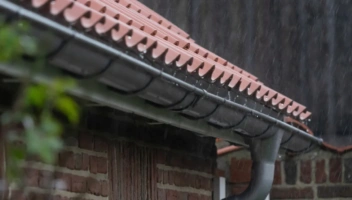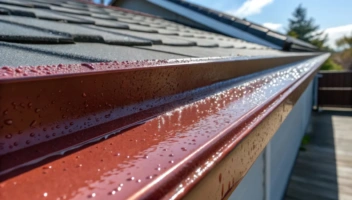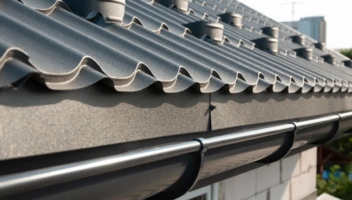Gutter Diagram: Detailed Look at Gutter and Drainage System
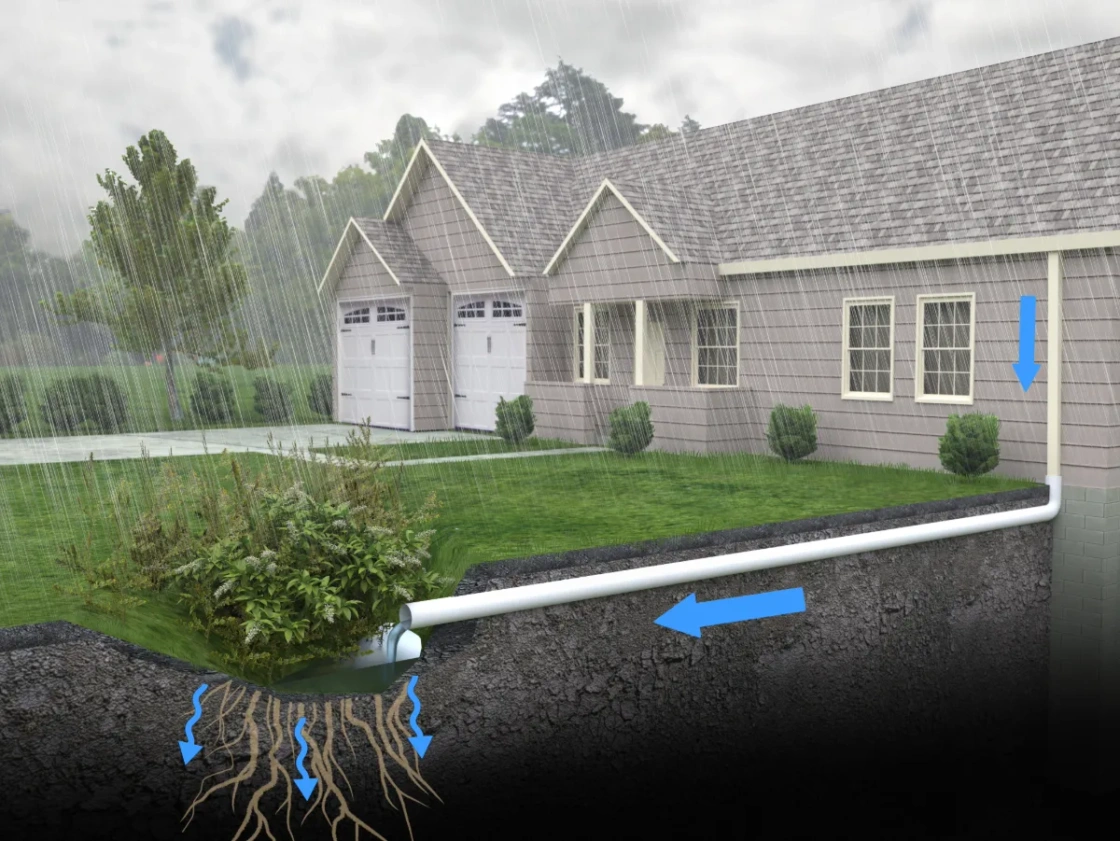
Gutters play an important role in protecting your home. With the help of downspouts, gutters direct the flow of water and remove rainwater away from the base of your home. Knowing the ins and outs of gutters can help homeowners ensure their drainage system is set up for success. Below, we’ll go into detail with gutter diagrams that cover the overall system and the individual gutter.
Typical Residential Gutter System
The different components of a gutter system work together to collect water from the roof and direct it away from the foundation of the house.
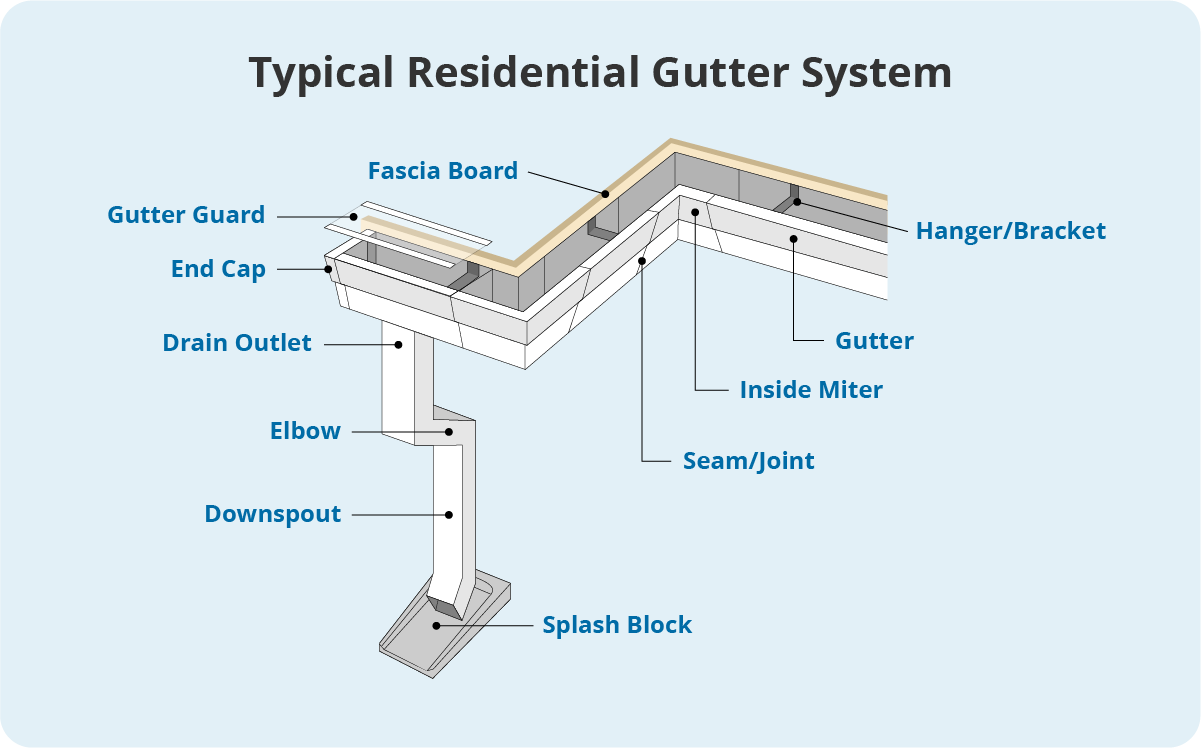
Residential Gutter System Components
- Gutter: The horizontal channel that collects water from the roof
- End Cap: Seals the end of a gutter section
- Fascia Board: The board that runs along the edge of the roof to which gutters are attached
- Hanger/Bracket: Supports the gutter and attaches it to the fascia board
- Gutter Guard: Covers the gutter to help prevent debris from entering while allowing water to flow
- Seam/Joint: Where two gutter sections connect
- Inside Miter: A corner piece used where two gutters meet at an inside corner
- Drain Outlet: Opening that connects the gutter to the downspout
- Downspout: Vertical pipe that carries water from the gutter to the ground
- Elbow: Angled section of downspout that changes the direction of water flow
- Splash Block: Directs water away from the foundation at the base of the downspout
Detailed Gutter Diagram
Gutters collect rainwater from the roof and they are positioned with a slight slope so that water flows through a downspout.
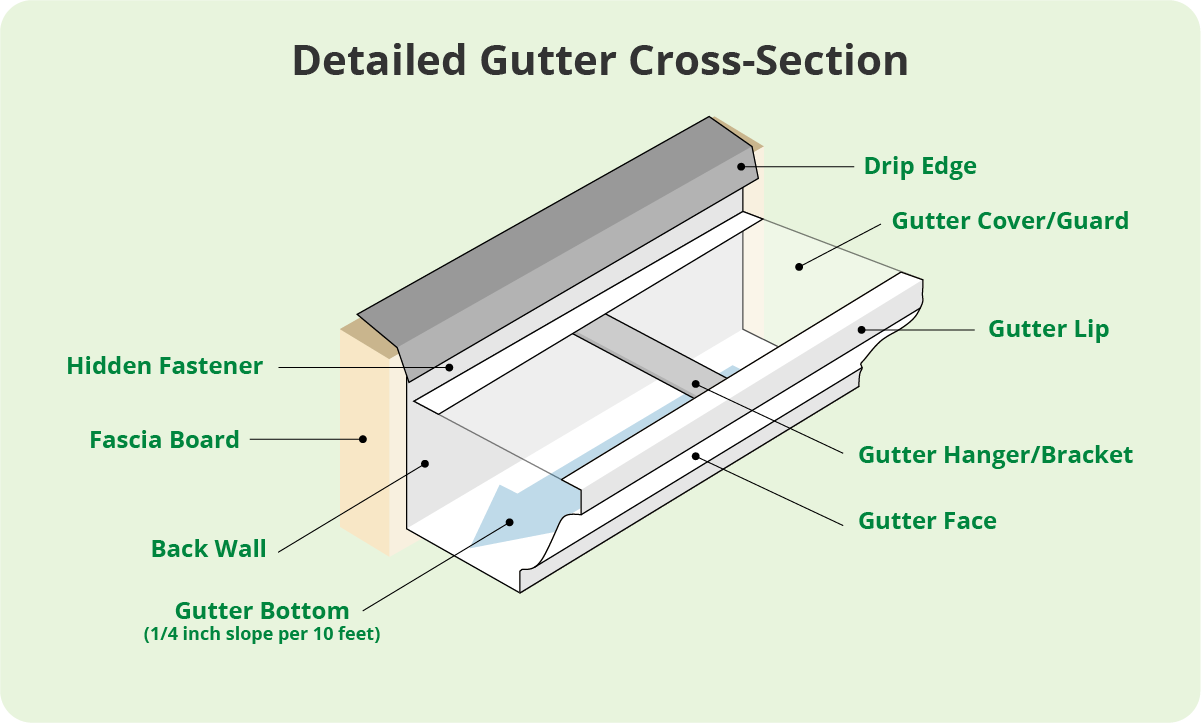
Gutter Components
- Drip Edge: Metal flashing that directs water from the roof into the gutter
- Gutter Lip: The forward-most edge of the gutter that’s often rolled or curved to provide strength and a finished appearance. This is the leading edge you see from the ground.
- Gutter Face: The front vertical wall of the gutter that’s visible from the ground. This is the main surface you see when looking up at gutters from below.
- Gutter Hanger/Bracket: The support structure that holds the gutter in place and attaches it to the fascia board. These come in various styles including hidden hangers, spike and ferrule systems, and bracket systems.
- Gutter Guard: The protective covering that helps prevent leaves and debris from entering the gutter while allowing water to flow through. These can be mesh screens, solid covers with a curved entry slot, or brush-style inserts.
- Back Wall: The vertical portion that attaches to the fascia board Gutter Bottom – The flat base of the gutter channel
- Fascia Board: The board behind the gutter to which it’s attached
- Hidden Fastener: Screws or other attachments that secure the gutter
Get To Know Your Gutters
Why does all of this matter? When gutters don’t work properly, the consequences can be severe. From mold and mildew growth, water damage, and basement flooding to foundational issues, roof damage, and more, damaged, ineffective gutters can lead to a host of household issues.
If your gutters are clogged, leaking or sagging, those are signs they aren’t working correctly. Improperly pitched gutters will also be ineffective since water won’t be diverted properly.
If you’re experiencing any of these issues, it’s time to consider gutter repair or replacement. Professional installation can help ensure that gutters are set up safely and effectively. LeafFilter’s gutter protection system is expertly installed at an angle that helps prevent debris from entering the gutter which can cause clogs, resulting in a clog-free gutter solution.
Learn More About LeafFilter Gutter Protection
